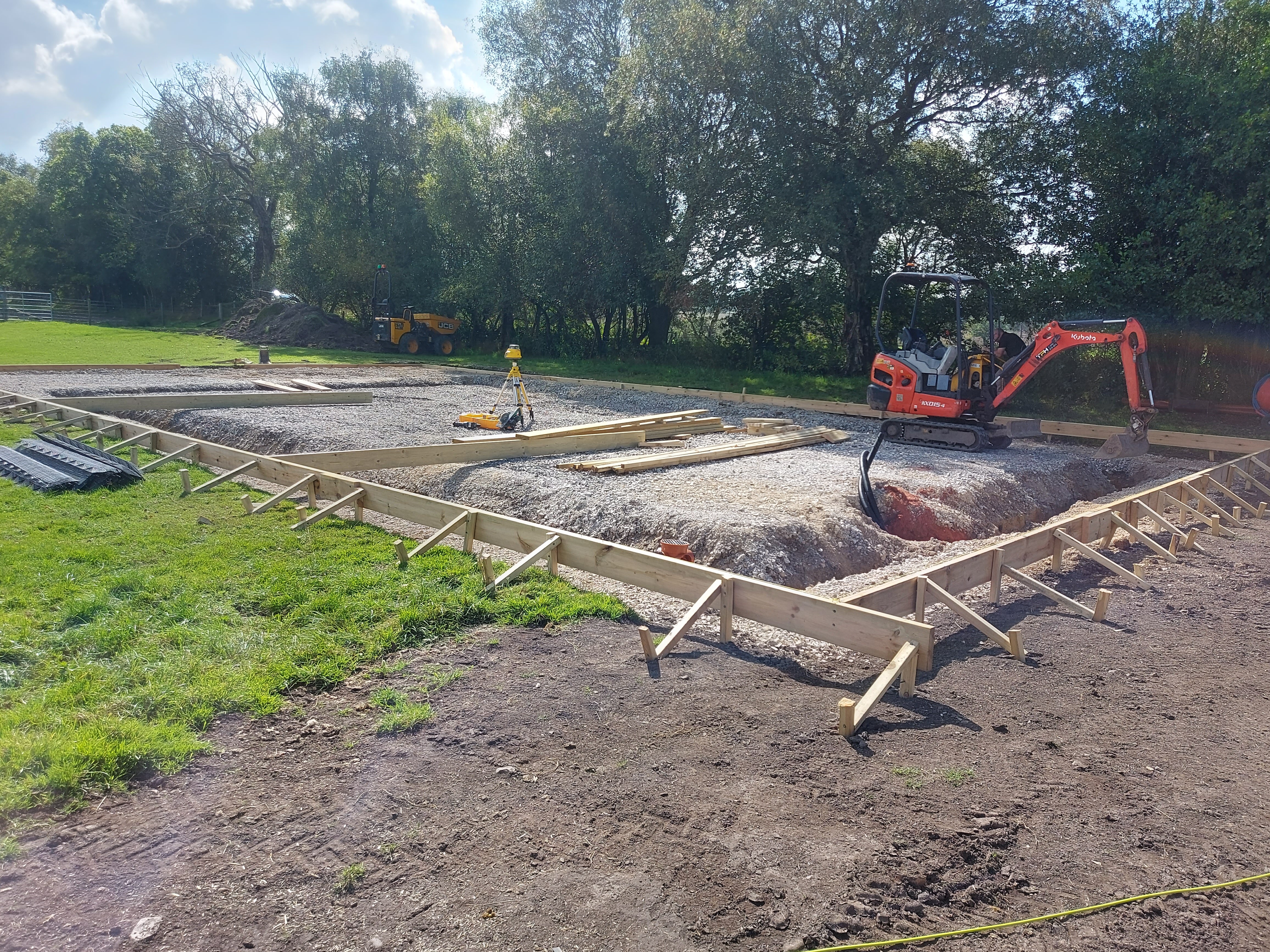Building with timber offers a sustainable, versatile, and aesthetically pleasing option for both residential and commercial structures. However, like any construction project, the foundation is a crucial element that dictates the building’s stability and longevity. When putting in foundations for a timber building, there are several unique considerations to ensure that your structure is safe, durable, and cost-effective.
In this guide, we’ll cover everything you need to know about laying foundations for timber buildings, from soil conditions and types of foundations to moisture control and environmental impact.
- Understanding Soil Conditions
Before selecting the type of foundation for your timber building, it's essential to conduct a thorough site assessment. The soil beneath your building will determine how much load it can bear and the type of foundation that’s most appropriate.
- Soil Type: Different soils have different load-bearing capacities. Sandy soils drain well but may not be as stable, while clay soils can expand and contract with moisture changes, leading to shifting foundations. Loamy soils are generally the most balanced in terms of drainage and stability.
- Soil Testing: A geotechnical report can help determine the characteristics of the soil on your site. Testing for bearing capacity, soil composition, and moisture levels will help avoid future structural issues.
- Water Table Levels: High water tables can pose challenges for timber buildings, as excess moisture can weaken the foundation and compromise the timber itself if not properly addressed.
- Choosing the Right Foundation Type
The type of foundation you choose will depend on several factors, including soil type, building size, and budget. Here are some of the most common foundation types for timber buildings:
Slab FoundationsA slab foundation involves pouring a thick layer of concrete directly onto the ground. It is one of the most commonly used foundations, particularly for smaller timber structures.
- Pros: Quick to install, provides a solid base, and offers protection against ground moisture.
- Cons: Limited insulation unless additional steps are taken, harder to access utilities under the slab, and may crack if soil movement occurs.
Pile Foundations
Pile foundations are ideal for sites with poor soil conditions or where the load needs to be distributed over a wider area. Piles can be made of timber, steel, or concrete, driven deep into the ground to provide support.
- Pros: Suitable for soft or unstable soil, allows for air circulation underneath the building, and reduces the risk of moisture-related issues.
- Cons: More expensive and requires specialized equipment to install.
Pier Foundations
Pier foundations use a series of posts or columns to support the building above the ground. These are commonly used for timber structures, especially in areas prone to flooding or with high water tables.
- Pros: Elevated design prevents water damage, easy to install in uneven terrain, and can provide additional storage or living space under the building.
- Cons: Not suitable for larger structures, may require additional bracing in high-wind areas, and needs regular maintenance to avoid decay.
Strip Foundations
Also known as trench foundations, strip foundations are shallow and run continuously under load-bearing walls. They distribute the weight of the building across a larger area, making them suitable for lighter timber structures.
- Pros: Cost-effective, easy to install, and good for smaller buildings.
- Cons: Not ideal for unstable soil or areas with high moisture levels, as it may lead to settling and cracking.
- Moisture Control and Drainage Considerations
One of the primary concerns with timber buildings is preventing moisture damage. Timber, although treated and durable, is susceptible to rot and degradation when exposed to water over extended periods. Proper moisture control and drainage systems are essential to ensure the longevity of both the foundation and the timber structure.
- Damp Proof Membrane (DPM): If using a concrete slab, include a DPM to prevent ground moisture from seeping through. This barrier can protect both the timber and foundation from moisture damage.
- Drainage Systems: Installing French drains, channel drains, or grading the site to divert water away from the foundation is crucial. This is particularly important for areas with heavy rainfall or poor natural drainage.
- Ventilation: For pier or pile foundations, ensure proper ventilation underneath the structure to allow moisture to evaporate and prevent timber rot. Adequate airflow can drastically reduce moisture buildup.
- Insulation and Thermal Performance
Timber buildings are known for their excellent insulation properties, but this can be compromised if the foundation is not properly insulated. To maintain energy efficiency and avoid heat loss, consider these factors:
- Insulating the Foundation: Adding insulation beneath or around the foundation can help keep your building warmer during winter and cooler in the summer. Insulated slabs or perimeter insulation can prevent cold bridging, where heat escapes through the foundation.
- Thermal Breaks: Installing thermal breaks between the timber frame and the foundation can reduce heat loss and prevent condensation from forming, which can lead to mold or rot in the timber.
- Environmental Impact
Sustainability is often a primary concern when building with timber, but it’s essential to extend this consideration to the foundation as well.
- Low-Impact Foundations: Where possible, opt for foundation systems that minimize site disturbance and reduce material use. For example, pier or pile foundations use less concrete and have a smaller carbon footprint compared to a full concrete slab.
- Locally Sourced Materials: Using locally sourced timber and materials for the foundation can reduce transportation emissions and support local economies.
- Sustainable Timber Treatments: Ensure that the timber used in foundations (if applicable) or close to the ground is treated with environmentally friendly preservatives to resist rot, termites, and moisture damage without harming the surrounding environment.
- Building Codes and Regulations
Before you start construction, it’s crucial to check local building codes and regulations. These laws will dictate the minimum foundation requirements for your timber building, ensuring that your structure is safe and up to code.
- Load-Bearing Capacity: Your foundation must be able to support the weight of the building and any potential loads (such as snow or heavy furniture). Building codes will specify minimum requirements for foundation depth, materials, and load distribution.
- Frost Depth: In colder climates, foundations need to be installed below the frost line to prevent heaving during freeze-thaw cycles. Ensure your foundation design accounts for this, particularly if you're building in a region with harsh winters.
- Wind Loads: In areas prone to high winds, additional bracing or deeper foundations may be required. Pile or pier foundations can be useful in this environment, as they allow the structure to absorb wind pressure.


 Back
Back
 October 23, 2024
October 23, 2024  5 min read
5 min read




